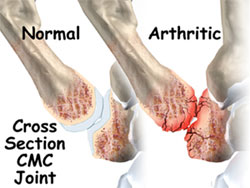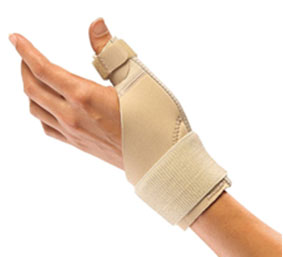Tag Archives: Thumb Joint Replacement Surgery in India Reviews

Thumb Joint Replacement Surgery in India

Planning your medical trip to India is a very simple process with Joint Replacement Surgery Hospital India
- You just need to fill in our enquiry form and one of our executives will contact you soon.
- +91-9860432255 Call us at the given contact number for any assistance.
- Complete information regarding surgery is provided on our website.
Introduction-
 Your doctor may recommend a thumb joint replacement surgery if the non-surgical treatments were not successful to ease the problems of thumb arthritis. In this article, we’ll help you to understand the following:
Your doctor may recommend a thumb joint replacement surgery if the non-surgical treatments were not successful to ease the problems of thumb arthritis. In this article, we’ll help you to understand the following:
- Which parts of the thumb are involved?
- How the surgeons perform this surgery?
- What to expect before and after the surgery?
Anatomy-Which parts of the thumb are involved?
The carpometacarpal joint or CMC joint of the thumb is where the metacarpal bone of the thumb attaches to the trapezium bone of the wrist. Sometimes, it is referred as the basal joint of the thumb. The CMC joint allows you to move your thumb into your palm, a motion is called opposition.
Several ligaments hold the joint together to form the joint capsule of the CMC joint. The joint capsule is a watertight sac around the joint. The joint surfaces are covered with a material called as articular cartilage, which is a sticky, spongy material that covers and allows one side of a joint to slide against the other joint surface. When this material wears out, the joint develops osteoarthritis that becomes painful.
Check out the Patient Testimonial, where the patient shares about their success stories from treatments through Joint Replacement Surgery Hospital India.
Hello, my name is Wendy Okonjo from Nigeria. I underwent thumb joint replacement surgery in India with the assistance of your surgery group. Earlier, I suffered with pain due to the arthritic pain in my right hand thumb for about three years. One of my friends had got her knee replacement surgery in India with your surgery group and shared her wonderful experience during her trip. She was impressed with the high quality medical services and care she received at the hospital. I contacted your surgery group and after discussing my medical conditions and sending my reports, I got my surgery fixed with them. The surgeon was well-qualified and knowledgeable. He explained me about the surgery and what I should expect before the surgery. The nurses were so caring and very friendly. My surgery went well and I experienced minimal pain. After about five weeks of surgery, I am still trying to rebuild the strength. I am grateful to your surgery group for the dedicated efforts and wonderful support during this entire journey.
What does the surgeon hope to achieve?
The arthritic joint surfaces can be sources of pain, stiffness and swelling. It is used to replace the damaged joint surfaces so that patients can perform their activities with less pain. Unlike a fusion surgery, which binds the joint together, an arthroplasty can help to take away the pain while allowing the thumb joint to retain the movement.
How should I prepare for the surgery?
The decision to undergo the surgery should be jointly taken by you and your surgeon. You need to understand the procedure and clear your questions and concerns by talking with your surgeon. Once you decide on the surgery, you need to take several steps. You’ll be asked to undergo a complete physical examination by your regular doctor to ensure you are in the best possible condition to undergo the operation.
Secondly, this preoperative visit will prepare you for your surgery. You’ll begin to learn some of the exercises that you’ll use during your recovery. Your therapist will help you anticipate any special needs or problems that you may have at home, once you are discharged from the hospital.
You’ll probably be admitted to the hospital early in the morning on the day of the surgery. You shouldn’t drink or eat anything after midnight, the night before surgery.
What happens during surgery?
Before we describe the procedure, let us look at the artificial thumb joint. The surgeons will have several ways to replace thumb joint surfaces. One method is to attach the ends of a prosthesis implant into the bones of the thumb joint. A newer method uses a small, marble-shaped implant to form the new joint surfaces. The spherical implant works like a ball bearing to give the joint a smooth arc of the movement.
The procedure takes about two hours to complete. The new method using the ball implant takes about 30 to 60 minutes. The surgery may be performed under general anesthesia or local anesthesia. Once you have anesthesia, your surgeon will ensure that the skin of your hand is free of infection by cleaning the skin with a germ-killing solution.
During the prosthesis implant procedure, an incision is made across the base of the thumb while the soft tissues are spread apart with a retractor. Special care is taken not to damage the nearby nerves going to the thumb. The joint capsule is opened, exposing the CMC joint. The ends of the bones forming the CMC joint surfaces are then taken off, forming flat surfaces. A burr is used to make a canal into the bones to form the thumb joint. The surgeon sizes the stem of the prosthesis to ensure a smug fit into the canal and then inserts it. When the new joint is in place, the surgeon then wraps the joint with a strip of the nearby tendon to give the new implants some added stability and protection. Then the skin is stitched together and a splint is applied.
During the Spherical implant method, the thumb joint is used as a spherical implant that looks like a marble. Your surgeon makes a small, one-inch incision at the base of the thumb joint. The ends of the bones form the CMC joint surfaces which to removed to form the flat surfaces. A burr is used to make a small notch or canal at the ends of the two bones. Your surgeon shapes the notch so that the ball-shaped implant will fit smugly in the joint and places between the ends of the shaped bones. The soft tissues are then sewn together and the thumb is splinted and bandaged.
What happens after surgery?
After surgery, your thumb will be bandaged with a well-padded dressing and a splint for support. This splint will keep the thumb in a natural position during healing. Your surgeon will check your hand within five to seven days. The stitches will be removed after 10 to 14 days, though most of the stitches will be absorbed into your body. You will be given pain medication to control discomfort after the surgery. You should keep your hand elevated above the level of your heart for several days to avoid swelling and throbbing. Keep your hand propped up on a stack of pillows while sleeping or sitting up.
What to expect during my rehabilitation?
A physical or occupational therapist will direct your recovery program. The rehabilitation time will depend on the type of procedure used. It may take up to three months after replacement with a prosthesis implant. The patients wear an arm-length cast with the thumb pointing out for about three weeks after this surgery. The patients are able to return back to their normal activity within three to five weeks after the spherical implant surgery. Since the surgery doesn’t require the surgeon to disturb the tendons near the joint so the recovery is faster. You can start the range of motion exercises involving the use of ceramic ball within one week after surgery.
The first few physical therapy treatments will focus on controlling the swelling and pain from the surgery. Your therapist will use a gentle massage and other hands-on treatments to ease the muscle spasm and pain. Strengthening exercises will be used to provide added stability around the thumb joint. You’ll learn to grip and support the items to do your tasks safely and with the least amount of stress on your thumb joint. As with any other surgery, you should refrain doing too much too quickly.
Some of the exercises will be designed to get your hand and thumb working in ways that are similar to your work tasks and daily activities. Your therapist will find better ways to do the tasks that don’t put too much stress on your thumb joint. Before the end of your therapy sessions, your therapist will teach you a number of ways to avoid further problems.
The goal of the therapist is to help you keep the pain under control, regain the fine motor abilities with your hand and thumb and improve the strength and range of motion.
Thumb Joint Replacement Surgery Hospital India
Indian Hospitals are becoming a more important component of medical tourism. India is at the center of this concept. Based in Nagpur, the hospital provides all the amenities and services that one would require to get their health back to normalcy. It is well connected with Mumbai and Pune, two of the travelling behemoths in India, which makes it one of the most accessible hospitals in India.
Thumb joint replacement surgery is one of the most critical surgeries among all, and is mainly required because of arthritis of the thumb joint. There is no medical treatment available for thumb joint arthritis. This arthritis might become painful and decrease the movement of the thumb joint. The only option one has, is cortisone injections, but that too is a limited option, as one cannot take an unlimited amount of cortisone injections. Therefore, one has no other option but to sign up for thumb joint replacement surgery.
We have all the necessary, top of the line machinery and devices that = provide the right kind of support and service to people who sign up with us for medical treatment and medical surgeries. We have some of the most renowned and skilled surgeons and a large number of surgery related resources, which makes it easier to provide all the services that our patients and clients would require. We strive to be a single window service provider for all kinds of surgeries and related services.
Our hospital takes extreme care and concern when it comes to diagnosis of the medical issue that people are facing, to ensure that we, as well as our clients and patients get a clear picture of what they ail from, and how there can be a solution for it. We have a number of experienced and skilled doctors, surgeons and other medical personnel, who have been on our panel for a number of years. These surgeons are well known in the field, and provide only the best kind of service that would be required. With medical tourism, it is becoming a lot easier to travel to India for medical help. It is also the most economical option that is available. We understand the issues that people traveling from foreign countries for medical treatment might face, and therefore provide all the amenities and services – medical as well as non-medical – so that they have a safe and comfortable experience, and strive to be a single window service provider, ensuring that the patients and clients do not face any amount of inconvenience. With our country having diplomatic relations with almost every country, we as a hospital are well equipped to provide you with all the services, amenities and surgeries that you would require for a safe surgery and a healthy and safe future. Contact us today for your medical requirements, and we are sure that we will be able to provide you the best options.
If you are really seeking for Thumb Joint Replacement Surgery, kindly fill up the form for a free consultation with our surgeons. You will be provided with thorough analysis and suggestions regarding the Thumb Joint Replacement Surgery you are seeking.
Listen to the Voices of Our Happy Patients
FAQ’s
That is a decision that is best made between you and your treating physician. Typically, surgery is only considered if conservative treatments fail and the pain from arthritis continues to limit your activity or cause pain that is intolerable.
Most surgeons practice at one or two local hospitals. Find out where your operation will be performed. Have many of the operations you are thinking about having been done in this hospital? Some operations have higher success rates if they are done in hospitals that do many of those procedures. Ask your doctor about the success rate at this hospital. If the hospital has a low success rate for the operation in question, you should ask to have it at another hospital. Until recently, most joint replacement surgery was performed on an inpatient basis and patients stayed in the hospital for 1 or more days. Today, a lot of surgery is done on an outpatient basis in a doctor’s office, a special surgical center, or a day surgery unit of a hospital. Outpatient surgery is less expensive because you do not have to pay for staying in a hospital room. Ask whether your joint replacement surgery will be done in the hospital or in an outpatient setting. If your doctor recommends inpatient surgery for a procedure that is usually done as outpatient surgery, or just the opposite, recommends outpatient surgery that is usually done as inpatient surgery, ask why. You want to be in the right place for your operation.
Anesthesia is used so that surgery can be performed without unnecessary pain. Your surgeon can tell you whether the operation calls for local, regional, or general anesthesia, and why this form of anesthesia is recommended for your procedure.
Local anesthesia numbs only a part of your body for a short period of time, for example, a tooth and the surrounding gum. Not all procedures done with local anesthesia are painless. Regional anesthesia numbs a larger portion of your body, for example, the lower part of your body for a few hours. In most cases, you will be awake with regional anesthesia.
General anesthesia numbs your entire body for the entire time of the surgery. You will be unconscious if you have general anesthesia.
Anesthesia is quite safe for most patients and is usually administered by a specialized physician (anesthesiologist) or nurse anesthetist. Both are highly skilled and have been specially trained to give anesthesia. If you decide to have an operation, ask to meet with the person who will give you anesthesia. Find out what his or her qualifications are. Ask what the side effects and risks of having anesthesia are in your case. Be sure to tell him or her what medical problems you have including allergies and any medications you have been taking, since they may affect your response to the anesthesia.
Your surgeon can tell you how you might feel and what you will be able to do or not do the first few days, weeks, or months after surgery. Ask how long you will be in the hospital. Find out what kind of supplies, equipment, and any other help you will need when you go home. Knowing what to expect can help you cope better with recovery.
Ask when you can start regular exercise again and go back to work. You do not want to do anything that will slow down the recovery process. Lifting a 10 pound bag of potatoes may not seem to be “too much” a week after your operation, but it could be. You should follow your surgeon’s advice to make sure you recover fully as soon as possible.
Health insurance coverage for surgery can vary, and there may be some costs you will have to pay. Before you have the operation, call your insurance company to find out how much of these costs it will pay and how much you will have to pay yourself.
Ask what your surgeon’s fee is and what it covers. Surgical fees often also include several visits after the operation. You also will be billed by the hospital for inpatient or outpatient care and by the anesthesiologist and others providing care related to your operation.
After surgery, there is a significant recovery period. The thumb is casted, with a pin in place for one month, after which physical therapy is essential to regain flexibility and strength.
You can most definitely choose hotels as per your convenience to you and your budget.
You can talk to the doctor and satisfy all your medical queries. You can also send us your queries for answers from the top doctors.
To know about the procedure of getting an Indian Medical Visa, please go to our website where you will find all the details regarding the initial procedure. You can also send us a query regarding the same.
Yes. Many hospitals in India have language translators to help you communicate better and effortlessly with the doctors and medical staff.







